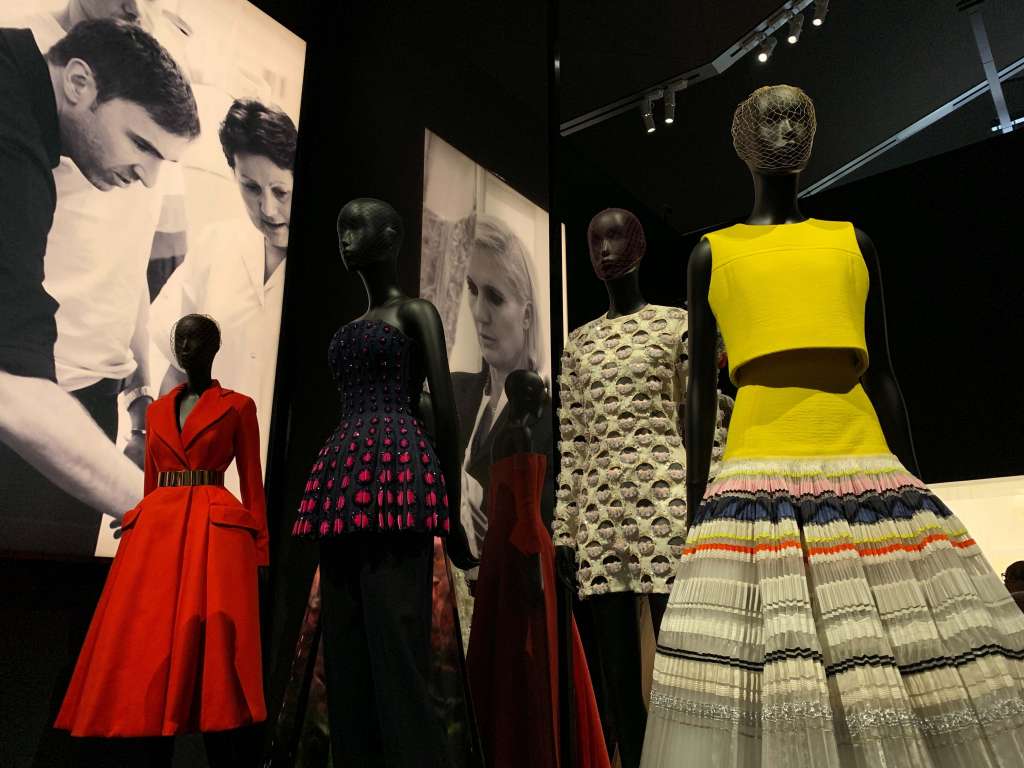Seamless Catwalk - Managing Fashion Supply Chain



Summary: What does it take to be a successful fashion brand? It's not just about having a good eye for detail or a stellar design on the catwalk, an organization should also be able to manage a complex supply chain. Here, we explore the importance of fashion supply chain management. We also look at how some of the world's most successful brands built their businesses by streamlining supply chains.
The first look at a brand’s latest collections for the upcoming seasons happens on the catwalk. A lot of hard work goes into a fashion show event and ensuring that everything goes smoothly is quite a task.
There is a lot more that goes behind the scenes and beyond the catwalk when it comes to a successful fashion brand. From sourcing materials to production and distribution, a seamless supply chain ensures profits in the apparel business.
Why Should Fashion Brands Manage Their Supply Chains?
The fashion business is a huge market. In 2017, the size of the global fashion industry was USD 2.22 trillion. For a long time, the fashion sector faced several problems in managing the supply chain. Here’s why supply chain management (SCM) is crucial to ensure your product gets from the factory to the catwalk and beyond.
- Constantly changing trends: Micro-seasons, fast fashion, and ever-changing trends have a significant impact on the entire fashion industry. To satisfy the demands of a large customer base, fashion retailers must offer a wide range of products.
- Short product life: The fashion industry's product lifecycle is extremely short due to the lightning-fast rate at which products go out of style. The fashion industry is always making plans for the next season’s catwalk, putting new designs into production, and making them better before the old ones become out of style.
- Complex supply chain: Fashion also has a complicated supply chain. It includes the manufacturers who produce the finished garments, textiles, and fibers, adding three more links to the chain before wholesalers and retailers. The production, distribution, and sale of new designs are the first steps in the supply chain.
- Transparency: Today, buyers are becoming mindful of brands’ sustainability practices. With multiple labor violations around the world, consumers pay more attention to where and how their clothes are being made. Fashion brands must collaborate with numerous manufacturers to meet demands, and at the same time, monitor their complex supplier networks for a visible supply chain.
Catwalks Don’t Make Successful Brands, Robust SCM Does

Fashion is one of the world’s largest industries and it is projected to get bigger. While the fashion industry takes note–and follows suit–when one of these brands launches a new collection, it isn’t just the catwalk event that guarantees success. These brands have a strong SCM to translate each showcase into profitable sales.
Here's how a strong backend or SCM can reap profits off the glamorous front end or catwalk.
- Product availability: No matter how successful a fashion show is, the brand should be able to meet customer demands offstage. Judicious inventory planning is a key element of a strong SCM. The fashion supply chain should be able to reach a balance between the forecasted demand and the inventory at hand. Zara, backed by its agile SCM called Cube, manages to change its clothing designs every fortnight, as against its competitors that change these every 2-3 months.
- On-time deliveries: We live in a hyper-connected world where e-commerce stores contribute to a major chunk of brand sales. Running out of stocks at the wrong time affects sales. Brands need to prevent shortages and delays to keep their profits high. Since Louis Vuitton implemented the inventory-based SCM system, DDMRP, it could improve delivery times by up to 50% and reduce inventory levels by 30% while ensuring products are always available to customers.
- Sourcing materials: For steady delivery, a brand’s procurement channel should be strong. A successful catwalk may lead to high demands for the product, but if you are stuck with low raw material supplies, the demands won’t be met. The same goes for unforeseen events like the recent pandemic. A strong supply chain ensures a new customer belt and seamless new supply in such events. For instance, Zara’s suppliers deliver raw materials in just five days after orders are placed.
- Ethical supply chains: No matter how much a design is loved on the ramp, if there are lapses in terms of ethics or sustainability, buyers may reject the product. Better resource management and transparency can prevent this situation. Gucci measures and annually publishes the total environmental footprint of its suppliers through its digital Environmental P&L account to maintain transparency.
Supply Chains: Managing Brands before and after a Catwalk

Given the shorter fashion seasons, fashion brands should ensure a successful catwalk design translates into profitable sales. They should prevent shortages and overstock of products. Sales for the season can be hit if an item runs out when the demand is high. Overstocking at a time when newer trends have emerged lowers profitability and takes up extra space in warehouses. A robust SCM will ensure a steady inflow of raw materials and finished products just in time to meet demands.
To keep up with the demand for innovative fashion, businesses must learn how to efficiently and effectively manage their supply chains. Whether you are a brand or someone about to set on a journey of fashion entrepreneurship, Fashinza can connect you with reliable suppliers and manufacturers. The platform will assist you with an AI-powered supply chain integration to help make the most out of your business.
Key takeaways:
- A catwalk event showcases your designs, but a well-managed supply chain ensures profits in the fashion industry.
- SCM helps businesses save money, improve efficiency, and increase customer satisfaction.
Book a demo with Fashinza today!



















